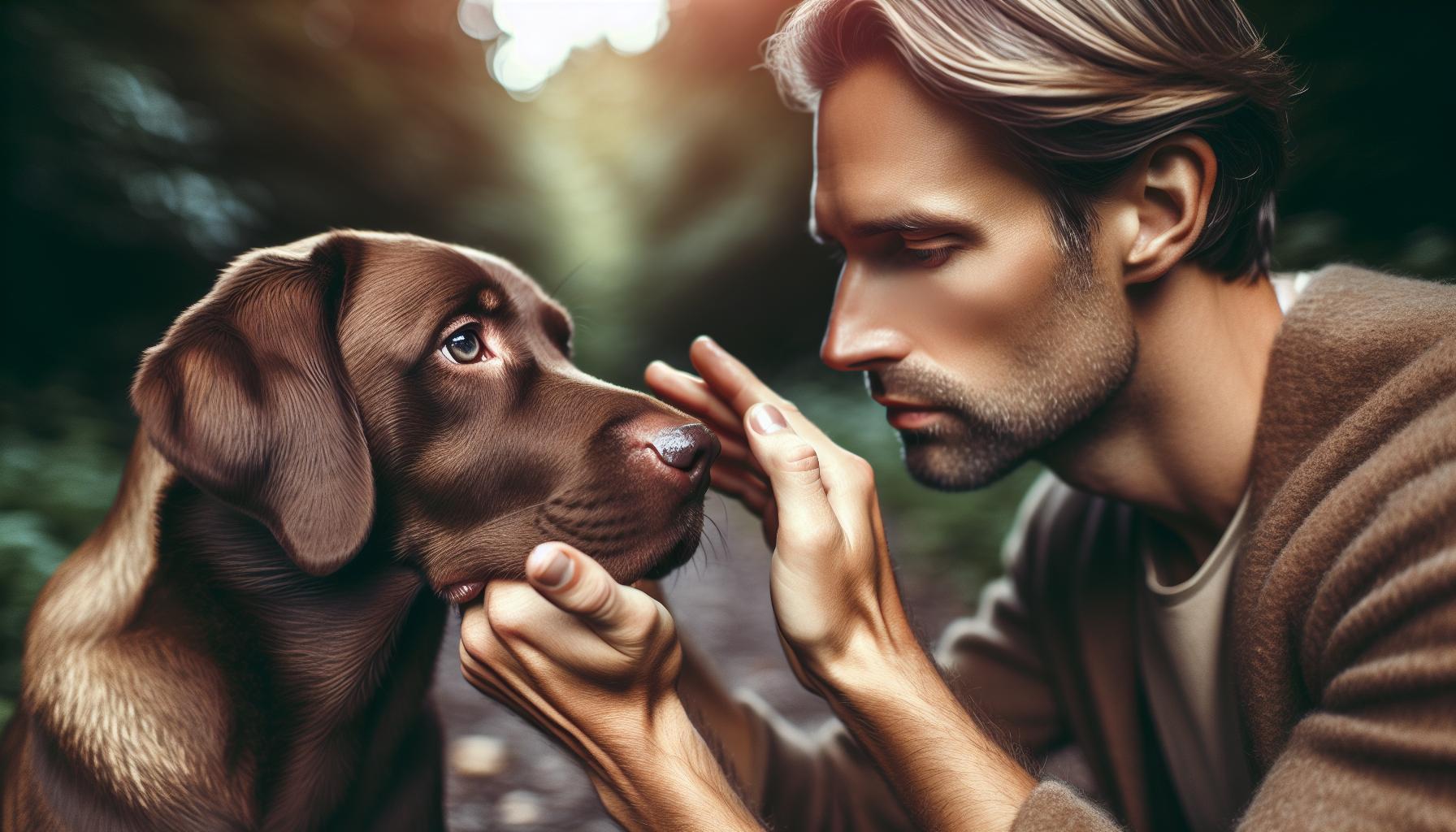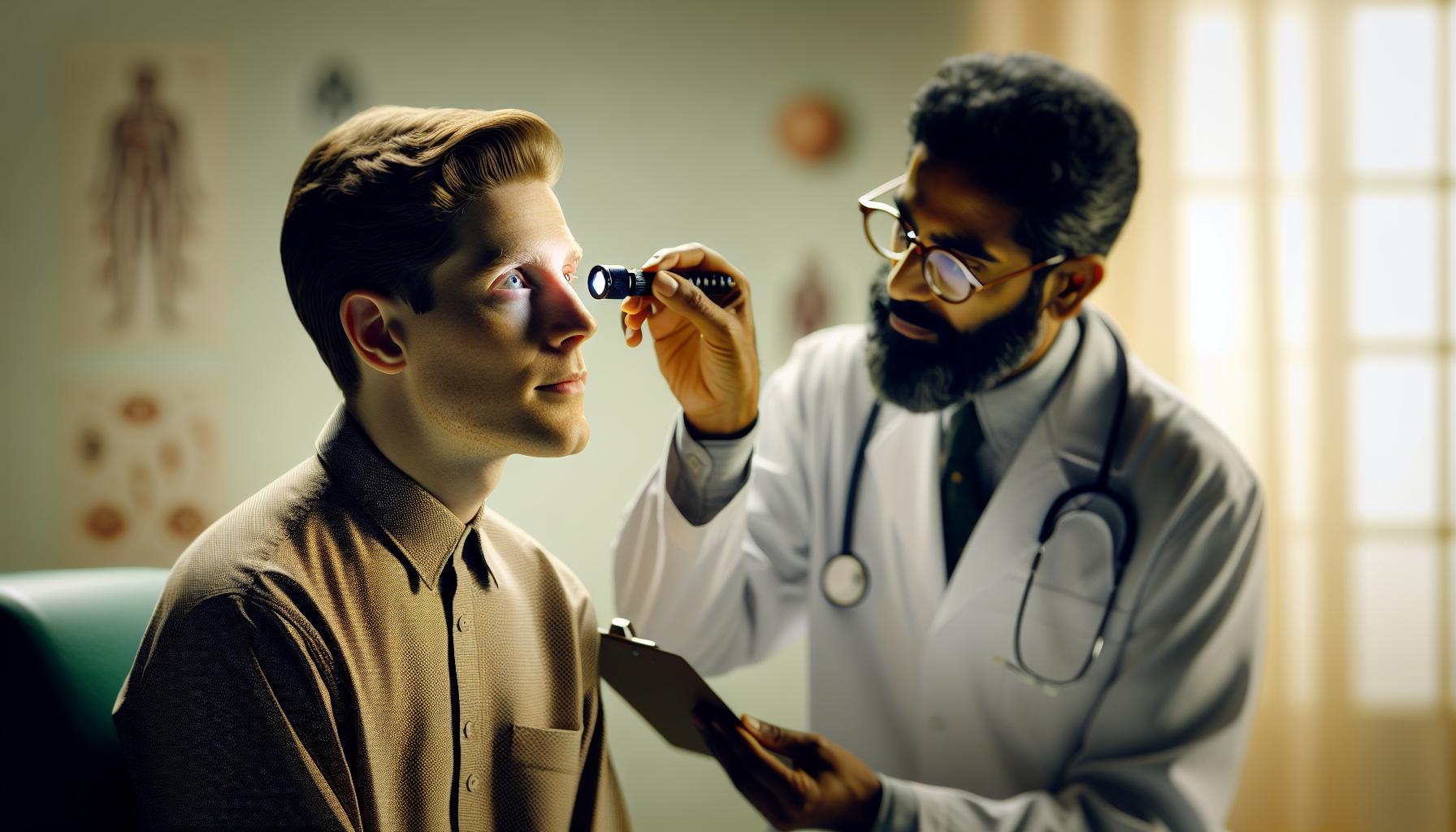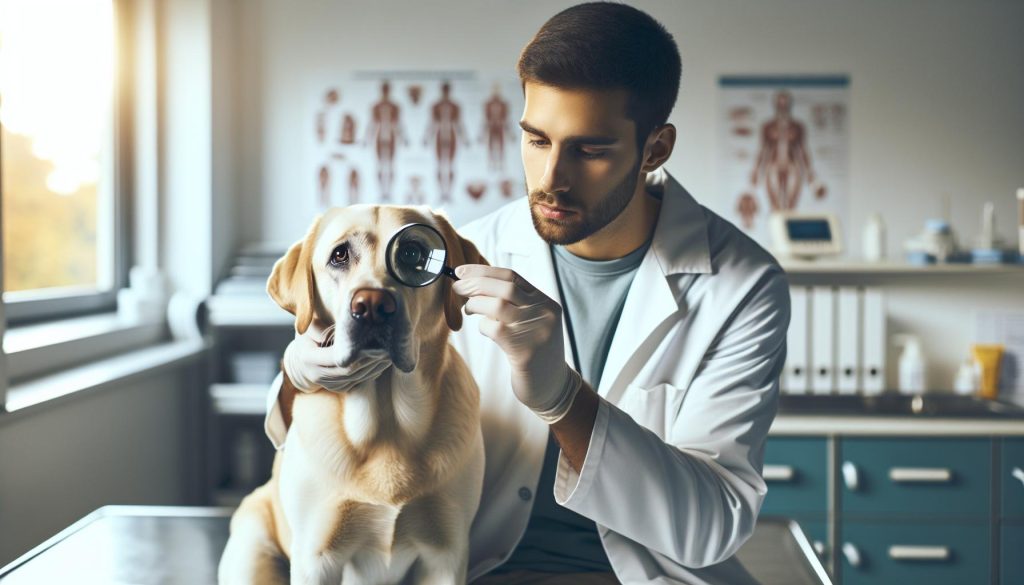Just like humans, dogs can experience various eye issues, including styes. These painful and often unsightly bumps can not only affect your dog’s comfort but also compromise their vision and overall well-being. Understanding whether dogs can get a stye in their eye is crucial for pet owners who are attentive to their furry friends’ health.
In this guide, we’ll dive into the causes, symptoms, and treatment options for styes in dogs. It’s essential to recognize the signs and take action as soon as possible, ensuring your beloved companion stays happy and healthy. With the right information, you can provide the best care and support when it comes to your dog’s eye health. Let’s explore the essentials together to keep your pup thriving!
Can Dogs Get Eye Styes? Understanding the Condition
Dogs can indeed experience eye styes, a condition somewhat similar to what humans encounter. Styes are small, painful lumps that can form along the eyelid’s edge, usually resulting from a bacterial infection of an oil gland. When these gland ducts become blocked, it can lead to inflammation and irritation. While they are not as common in dogs as in humans, they can occur, particularly in those who may have underlying skin conditions like dermatitis, or in breeds with droopy eyelids, which can trap debris and moisture.
Recognizing a stye in your dog may involve observing certain symptoms. Affected areas often appear swollen and red, and your dog may show signs of discomfort, such as pawing at the eye or squinting. If your pet is reluctant to open their eye or is producing more tears than usual, these could also be indicators of a stye or other eye-related issues.
Understanding the potential impact of styes on your dog’s health is essential. While styes in dogs typically resolve on their own without complications, they can sometimes progress or signal other underlying concerns, like more serious infections. Ensuring your dog maintains good eye hygiene is vital in preventing styes and promoting overall eye health. Regular checks can help catch early signs of irritation or infection, allowing for prompt care when needed.
Signs Your Dog May Have a Stye

Dogs can’t tell us when something is wrong, which is why being observant is crucial. If your furry friend seems to be experiencing discomfort around their eyes, recognizing the signs of a stye early can help you provide the necessary care. A stye generally manifests as a red, swollen bump at the edge of your dog’s eyelid, often resembling a small pimple or lump. This may be accompanied by a few key behaviors indicating your pet is feeling unwell.
Keep an eye out for signs of irritation and discomfort. Your dog may frequently paw at their eye, squint, or rub their face against furniture in an attempt to alleviate the discomfort. Increased tearing or discharge from the affected eye can also be a clear indicator of a stye or other eye-related problems. Furthermore, your dog might be more reluctant to open their eye fully, especially if they experience sensitivity to light.
Another notable sign to observe is behavioral changes. If your dog appears unusually lethargic or irritable, it could be due to the pain associated with the stye. Since dogs are generally excellent at masking their discomfort, any shift in their energy levels or demeanor should be taken seriously. Monitor for any accompanying symptoms like swelling in the surrounding tissue or warmth in the affected area, which can indicate that the stye might be more than just a minor issue.
Understanding these signs and acting promptly can lead to better outcomes for your dog’s eye health. Regular eye examinations and maintaining good hygiene are essential, especially if your dog has a history of eye issues or belongs to a breed prone to eyelid problems.
Causes of Styes in Dogs: What to Know

An interesting fact to consider is that just like humans, dogs can develop styes due to clogged oil glands or hair follicles at the base of their eyelashes. This condition leads to swollen, painful bumps that can disrupt their day-to-day comfort. Commonly, a stye forms when bacteria infects these glands, resulting in inflammation. Maintaining healthy eyelids and ensuring proper grooming can play a significant role in prevention.
Several factors contribute to the development of styes in dogs. One primary cause is poor hygiene, which can allow bacteria to thrive in the eye area. Dogs that frequently roam outdoors might be exposed to dirt, pollen, and other irritants that can compromise eyelid health. Additionally, certain breeds are predisposed to eye conditions, such as Bulldogs and Poodles, which often have prominent or loose eyelids. This anatomical predisposition might increase the likelihood of styes and other related issues.
Another significant contributor is allergies. Dogs with environmental sensitivities may rub their eyes or scratch at them, leading to irritation and potential infection. Allergies can stem from pollen, dust mites, or even certain food items, making it essential for owners to identify and manage potential triggers. By keeping a close eye on your dog’s environment and making necessary adjustments, you can help reduce their chances of developing conditions like styes.
In summary, understanding the causes of styes in dogs allows pet owners to adopt preventive measures while ensuring that their furry friends’ eye health remains a priority. Regular grooming, vigilant monitoring of environmental factors, and prompt attention to any signs of discomfort can make a world of difference in preventing this painful condition.
How to Differentiate Styes from Other Eye Issues

Understanding the differences between various eye issues in dogs can be crucial for ensuring their well-being. While a stye is a common occurrence, symptoms may overlap with other conditions that can affect your dog’s eyes. Keeping an eye on the specific characteristics of these conditions can empower you to provide the best care for your furry friend.
A stye typically appears as a small, localized bump on the eyelid, often causing discomfort. In contrast, other issues such as conjunctivitis (pink eye) can lead to redness, swelling, and a discharge from the eyes that may be watery or thick. In the case of conjunctivitis, the entire conjunctival membrane may appear inflamed rather than presenting as a single bump. Another condition to be aware of is entropion, where the eyelids roll inward, potentially causing the lashes to rub against the cornea. This can lead to irritation, frequent squinting, and excessive tearing, differing markedly from the localized nature of a stye.
It’s also essential to consider the symptoms accompanying each condition. Dogs suffering from allergies may exhibit signs like excessive yawning, pawing at the face, or rubbing against surfaces. Additionally, if there’s a presence of a watery or greenish discharge, this may indicate an underlying infection rather than a stye. For example, keratoconjunctivitis sicca (dry eye) can also manifest as redness but is distinguished by a markedly dry cornea and a lack of adequate tear production.
To summarize, differentiating between styes and other eye issues requires careful observation of the symptoms and characteristics displayed. If you notice that your dog has a bump on their eyelid, monitor it for signs of redness, discharge, or behavioral changes that could indicate discomfort. When in doubt, consulting your veterinarian can provide clarity, ensuring your dog receives the appropriate care based on their symptoms. Regular check-ups and being attentive to your dog’s eye health can go a long way in preventing potential issues from escalating.
Immediate Care for Your Dog’s Stye

Recognizing a stye on your dog’s eyelid can be concerning for any pet owner, but swift and thoughtful action can alleviate your pet’s discomfort and prevent complications. To care for your dog immediately after noticing a stye, begin by ensuring your dog remains calm. A stressed or anxious dog may exacerbate the problem by rubbing their eyes, which can lead to further irritation or an infection.
Once your dog is settled, gently examine the stye. Look for any signs of swelling, redness, or discharge. It’s essential to keep your hands clean during this process-wash them thoroughly to avoid introducing bacteria. If the stye appears swollen but without persistent discharge, you can apply a warm compress. Soak a clean cloth in warm (not hot) water, wring it out, and place it gently over the affected area for about 5 to 10 minutes. This can help soothe the area, reduce swelling, and promote drainage if there’s any buildup.
After applying the warm compress, observe your dog closely for any changes. If there’s no improvement after doing this a few times a day, or if more concerning symptoms arise, such as redness spreading or increased discharge, it’s crucial to seek veterinary advice. Additionally, preventing your dog from scratching or pawing at the stye may involve using an Elizabethan collar, which can help reduce irritation while promoting healing.
In summary, immediate care for a stye involves keeping your dog calm, applying warm compresses, observing the condition closely, and safeguarding against further irritation. These steps not only provide comfort but also pave the way for recovery and better eye health for your furry companion.
Home Remedies for Treating Dog Eye Styes
Recognizing the discomfort a stye can cause your dog, exploring home remedies offers a way to provide relief and support healing in a gentle, caring manner. One of the most straightforward and effective home remedies is the application of warm compresses. Using a clean cloth soaked in warm (not hot) water, apply it gently over the affected eyelid for about 5 to 10 minutes a few times a day. This technique can help reduce swelling, soothe irritation, and promote drainage.
Another natural aid is saline solution, which can help keep the area clean. To make a simple saline solution, mix one teaspoon of salt in a cup of warm, distilled water. Using a cotton ball or gauge, apply the saline to the area surrounding the stye, avoiding direct contact with the stye itself to prevent further irritation. This solution can help flush away allergens and irritants that may be contributing to the problem.
In addition to compresses and saline, consider incorporating herbal remedies like chamomile tea bags. Once brewed, and after allowing it to cool, you can place the tea bag on the stye for about 5-10 minutes. Chamomile has anti-inflammatory properties that may assist in soothing the eye and promoting healing. Always ensure that any herbal remedy you use is safe and appropriate for dogs.
Lastly, while these home remedies can provide comfort and improve conditions, it’s essential to maintain a watchful eye on the stye’s progress. Keeping your dog’s environment clean and reducing their exposure to irritants will not only aid in healing but also help prevent future occurrences. If symptoms persist or worsen, don’t hesitate to consult your veterinarian for further assistance.
Veterinary Treatments for Dog Eye Problems
When it comes to addressing your dog’s eye problems, particularly styes, veterinary intervention can be essential for ensuring your pet’s well-being. A stye, though often manageable at home, can sometimes lead to complications if not treated appropriately. If your dog’s stye worsens or if there are signs of infection, it’s time to consult a veterinarian who can provide targeted remedies to alleviate discomfort and promote healing.
Veterinarians typically start with a thorough examination to confirm the diagnosis, differentiating a stye from other potential eye issues. Once a stye is confirmed, treatment may include the administration of topical antibiotics to prevent or treat any possible infection surrounding the stye. In more severe cases, your veterinarian may recommend oral antibiotics, especially if the stye does not improve with topical treatments or if your dog shows signs of systemic infection, like fever or lethargy.
In some instances, if the stye is particularly large or has persisted despite treatment, a veterinarian may consider performing a minor surgical procedure to drain the stye. This can help alleviate pressure, reduce pain, and speed up healing. Post-surgical care typically involves keeping the area clean, administering any prescribed medications, and monitoring for any signs of complications.
In addition to these treatments, your vet may provide guidance on preventive measures to reduce the risk of future styes. For example, regular grooming, maintaining a clean living environment, and ensuring your dog’s eye hygiene can play significant roles in eye health. If your dog has a history of recurring styes or other eye issues, discussing a more comprehensive eye care plan with your veterinarian is always wise. Such proactive steps can help keep your furry friend comfortable and healthy.
Preventing Styes and Maintaining Eye Health
Maintaining your dog’s eye health is a vital aspect of overall pet care that can help prevent issues like styes. Regular grooming is one of the simplest yet most effective ways to keep your dog’s eyes clear of irritants and potential blockages. By brushing your dog’s fur, especially around the face and eyes, you can remove dirt, debris, and loose hair that may interfere with eye hygiene. Additionally, consider wiping the eye area with a soft, damp cloth to clean away any discharge or buildup, ensuring the fur remains dry and free from infection.
Establishing a routine health regimen can further enhance your dog’s eye health. Regular check-ups with a veterinarian will allow for early detection of any potential eye issues, including styes. During these visits, your vet can educate you on specific precautions based on your dog’s breed and lifestyle. Some breeds are more prone to eye issues due to their anatomy, and understanding your pet’s needs can help you take proactive measures.
Environmental cleanliness plays a significant role in preventing styes. Keeping your dog’s living area tidy reduces the risk of eye infections caused by irritants or allergens. Ensure that their bedding is washed regularly and free from pests. Additionally, monitor the environment for dust and pet dander, which can contribute to eye irritation, and make adjustments as necessary.
Promoting Eye Hygiene
Encouraging your dog to avoid rubbing their eyes is crucial, as this action can lead to infections and exacerbate existing conditions. One way to discourage this behavior is by ensuring their nails are trimmed, minimizing the risk of scratching that could lead to irritation. Moreover, if you notice your dog frequently pawing at their eyes, it might indicate an underlying issue requiring assessment and care from a veterinarian.
Incorporating a healthy diet rich in omega fatty acids can also benefit eye health. Foods containing these nutrients (like fish or certain oils) can help maintain appropriate tear production and hydrate their eyes. Moreover, proper hydration is essential; ensure your dog has constant access to clean, fresh water. This not only supports overall health but also aids in adequate eye moisture and clarity, reinforcing your efforts in preventing styes and other eye problems.
By implementing these strategies, you can enhance your dog’s eye health and significantly reduce the chances of developing styes. Caring for your furry friend’s eyes with diligence and attention will help ensure they live a comfortable and happy life.
When to Seek Veterinary Help for Eye Issues
It’s essential to recognize the signs that indicate when a furry friend may need professional medical assistance, especially regarding eye health. A stye, while often manageable at home, can lead to complications if not addressed appropriately. If your dog is showing persistent symptoms, such as excessive tearing, redness, swelling, or any unusual discharge from the eyes, these signals warrant a closer examination. Just like with humans, if symptoms persist for more than a couple of days or worsen, seeking veterinary help becomes crucial.
When considering veterinary intervention, pay close attention to the behavior of your dog. If they are frequently scratching at their eyes or seem to be in pain, it’s essential to make that vet appointment sooner rather than later. Similarly, if there’s noticeable swelling around the eyes that doesn’t improve, or if your dog is squinting and appears sensitive to light, these can be indicators of a more serious underlying condition that exceeds the complexity of a simple stye.
In addition, certain breeds are predisposed to specific eye issues due to their anatomy, such as shallow eye sockets or prominent eyes. If your dog belongs to such a breed, maintaining a higher alertness to their eye health is vital. Regular check-ups with the veterinarian can significantly help in early detection and treatment of potential problems before they escalate.
Another important factor is the overall health status of your dog. Conditions like diabetes or compromised immune systems can complicate minor issues, making them more severe. If your dog has a pre-existing health condition or if you’re wary that the eye issues could be symptomatic of a broader health concern, don’t hesitate to reach out to your veterinarian. Early actions can help prevent more significant health crises and ensure your beloved companion stays healthy and happy.
Common Myths About Styes in Dogs
Many pet owners harbor misconceptions about eye conditions in dogs, particularly when it comes to styes. One prevalent myth is that styes are purely cosmetic issues and won’t affect a dog’s overall health. In reality, while a stye may not appear to be a severe condition, it can indicate underlying problems such as infections or irritations that may need prompt attention. Ignoring these signs can lead to complications, making it crucial for pet owners to take any eye issue seriously.
Another common myth is that styes are contagious among dogs. Fortunately, this is not the case. Styes form due to blockages in the oil glands of the eyelids, often exacerbated by factors like allergies or irritants, but they do not spread from one dog to another. This understanding can provide peace of mind to pet owners, allowing them to manage their dog’s eye health without undue worry about transmitting the condition to other pets.
Additionally, owners often erroneously believe that styes will resolve on their own without any intervention. While some mild cases might improve over time, styes can persist and worsen without proper care. Depending on the severity and underlying cause, the issue could develop into more serious conditions, such as conjunctivitis or even more severe infections. Therefore, seeking veterinary advice when noticing symptoms is always a wise decision.
Lastly, there’s a misconception that only certain breeds are prone to styes. Although genetic predisposition can play a role in various eye issues, any dog can develop a stye. Factors like age, health, and environmental conditions often have a more significant influence on whether a dog will experience these eye problems. By maintaining a routine eye care regimen and being aware of potential signs of distress, pet owners can help prevent styes and keep their furry friends healthy.
Caring for Your Dog’s Eyes: Essential Tips
Taking a proactive approach to your dog’s eye health can greatly reduce the risk of conditions like styes and other common eye issues. Just as regular check-ups and attention to personal health are essential for humans, the same level of care applies to our furry friends. Here are essential tips that every pet owner should incorporate into their routine to keep their dog’s eyes healthy and clear of problems.
Routine Eye Checks
Make it a habit to check your dog’s eyes regularly. Observe for any signs of redness, swelling, or discharge. Gently lifting the eyelids to inspect the surface of the eye can help catch issues early. If you notice any abnormalities, consult your veterinarian promptly to prevent more serious conditions from developing.
Keep it Clean
Maintaining cleanliness around your dog’s eyes is vital in preventing blockage of oil glands and the development of styes. Use a damp, soft cloth to wipe away any discharge or debris. If your dog has long hair, consider trimming around the eyes to prevent hair from irritating the area. Regular grooming not only helps with eye safety but also enhances overall hygiene.
Healthy Diet and Hydration
A well-balanced diet rich in vitamins and minerals supports healthy eyes. Foods high in antioxidant properties, such as leafy greens and fish, can be particularly beneficial. Ensure your dog has constant access to fresh water; proper hydration is crucial for eye moisture and overall health.
Avoid Irritants
Be mindful of your surroundings. Dust, smoke, and harsh chemicals can irritate your dog’s eyes. If your dog plays outside, keep them away from areas with high pollen counts or exposed to strong winds that might carry dust and allergens. Additionally, limit exposure to strong fragrances or household cleaning products that could be harmful.
To sum up, consistent care, appropriate nutrition, and a clean environment play significant roles in your dog’s eye health. By adopting these practices, you can minimize the risk of eye issues, including styes, ensuring your furry friend maintains bright and healthy eyes.
Understanding the Importance of Routine Vet Visits
Routine veterinary visits are an essential aspect of maintaining your dog’s overall health, especially regarding their eye care. Regular check-ups can help identify potential issues before they develop into serious problems. While you may keep an eye on your dog’s health at home, a professional’s insight can catch subtler signs of discomfort or disease, including conditions like styes which might not be immediately visible.
During these appointments, veterinarians can conduct thorough examinations, including evaluating your dog’s eyes for signs of styes or other eye conditions. Beyond just checking for visible symptoms, vets have access to diagnostic tools that allow them to assess the overall health of your pet’s eyes, including the tear film and any signs of irritation. Early detection through routine visits can not only save your dog from discomfort but also prevent complications that could lead to more invasive treatments later on.
To maximize the benefits of these veterinary visits, consider keeping a log of any changes in behavior, appetite, or signs of discomfort you notice at home. This information can be invaluable for your veterinarian, providing them with a comprehensive view of your dog’s health. Additionally, consistent vet visits allow for necessary vaccinations and preventive care, ensuring that your furry friend remains healthy and happy.
Lastly, many pet parents may overlook regular vet visits if their dog seems healthy or isn’t showing any immediate signs of trouble. However, much like humans who benefit from routine check-ups, dogs require the same commitment to preventative healthcare. By fostering a culture of regular veterinary visits, you contribute to your dog’s long-term eye health and overall well-being, securing a bright future for your four-legged companion.
Q&A
Q: Can dogs develop eye infections similar to styes?
A: Yes, dogs can develop eye infections that may resemble styes, resulting in swelling, redness, and discharge. These infections can be caused by bacteria, viruses, or allergies. It’s crucial to differentiate between a stye and other infections for proper treatment. For more details, refer to the “Signs Your Dog May Have a Stye” section in the main article.
Q: What are the common symptoms of an eye stye in dogs?
A: Common symptoms of a stye in dogs include localized swelling near the eyelid, redness, and excessive tearing. Your dog may also exhibit discomfort, excessive rubbing of the eye, or sensitivity to light. For further information, see the “Signs Your Dog May Have a Stye” section in the article.
Q: How can I prevent my dog from getting a stye?
A: To prevent styes in dogs, maintain proper hygiene by cleaning their face and eyes regularly. Regular grooming can help remove debris and prevent irritation. Furthermore, keep your dog’s living area clean to reduce exposure to allergens and irritants. Check out the “Preventing Styes and Maintaining Eye Health” section for more actionable tips.
Q: Are styes in dogs contagious?
A: No, styes in dogs are not contagious as they typically result from blocked oil glands or bacterial infections localized to one dog. However, practicing good hygiene can prevent spreading bacteria that may cause similar conditions. For more insights, refer to the “Common Myths About Styes in Dogs” section.
Q: When should I take my dog to the vet for a stye?
A: If your dog’s stye does not improve within a few days, worsens, or is accompanied by other symptoms like fever or lethargy, seek veterinary care. Early intervention can prevent further complications. For guidance on when to seek veterinary help, see the “When to Seek Veterinary Help for Eye Issues” section.
Q: What home remedies can I use for my dog’s eye stye?
A: Home remedies for a dog’s eye stye include warm compresses applied to the affected area to promote drainage and soothe discomfort. Ensure that any materials used are clean. For more information on treatment options, refer to the “Home Remedies for Treating Dog Eye Styes” section of the article.
Q: What should I avoid doing when my dog has a stye?
A: Avoid squeezing or popping the stye, as this can lead to further infection. Additionally, refrain from using human medications without consulting a veterinarian, as they may harm your pet. For a more comprehensive understanding, see the “Immediate Care for Your Dog’s Stye” section.
Q: How do I differentiate a stye from other eye problems in dogs?
A: A stye typically presents as a small, localized lump on the eyelid, while other eye problems may show more severe symptoms like cloudiness, extensive redness, or discharge. Consulting with a vet can help clarify any concerns. Learn more in the “How to Differentiate Styes from Other Eye Issues” section.
Future Outlook
If you suspect your dog may be developing a stye or experiencing other eye issues, don’t delay in seeking professional advice to ensure their wellbeing. Remember, early intervention can save your pet from unnecessary discomfort. For further insights, explore our articles on common dog eye conditions and effective home remedies that can support your pup’s health.
Ready to enhance your pet care knowledge? Sign up for our newsletter for the latest tips and tricks that every dog owner should know. Plus, don’t miss our consultation services if you have any specific concerns or need personalized guidance. Your dog’s health is paramount-take action today for their better tomorrow! For more on pet care essentials, check out our resources on grooming and health checks, and join the conversation by sharing your experiences in the comments below!




